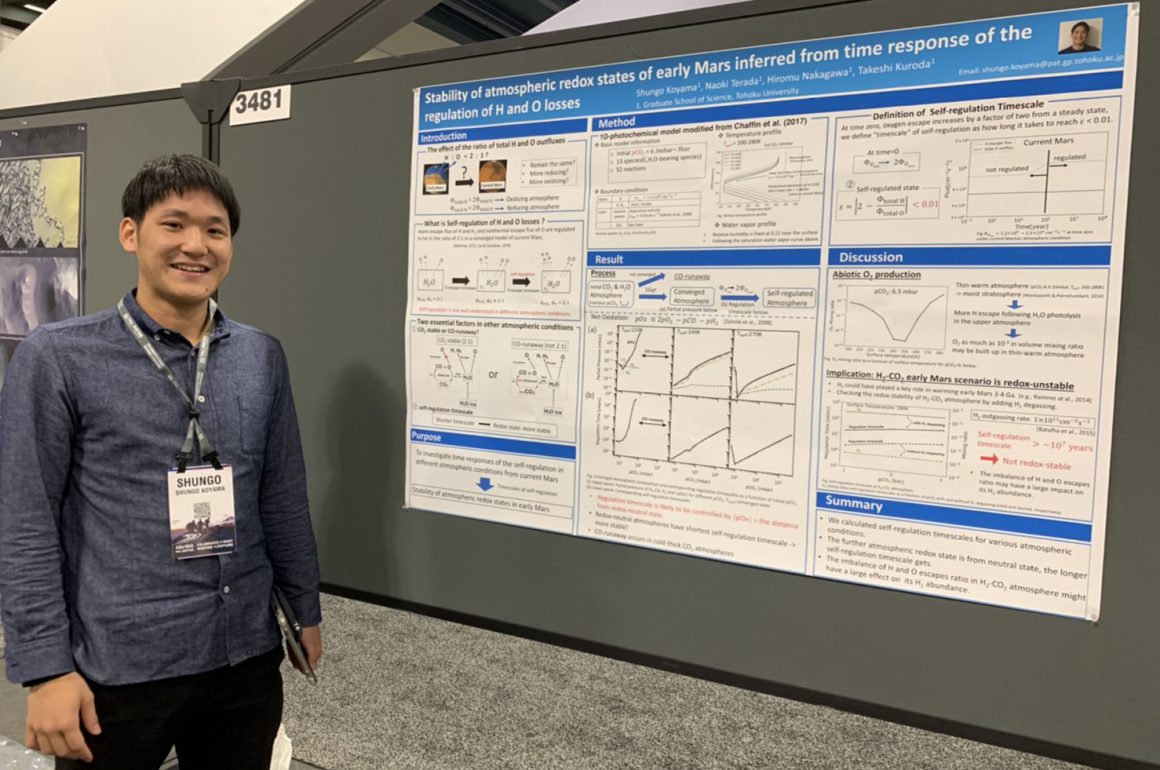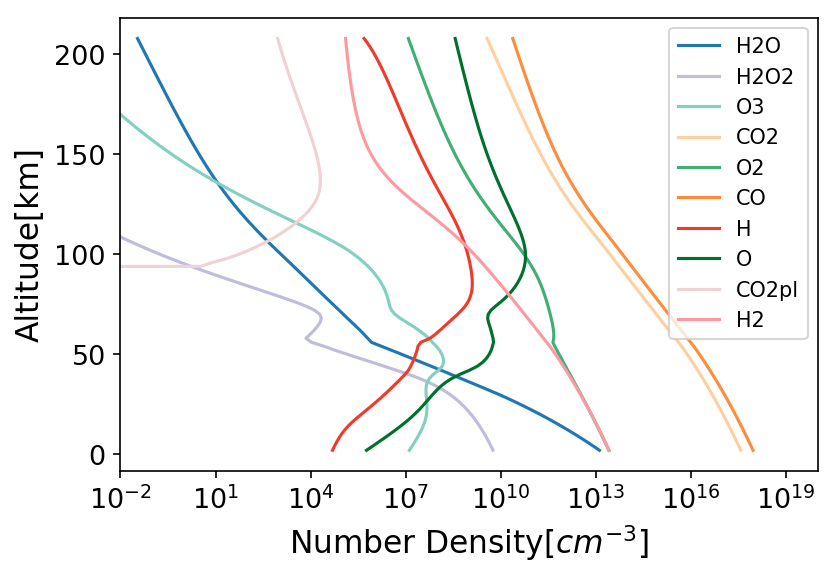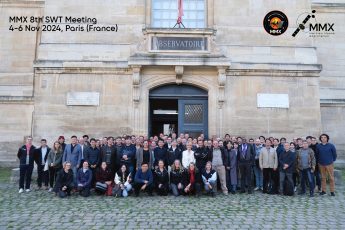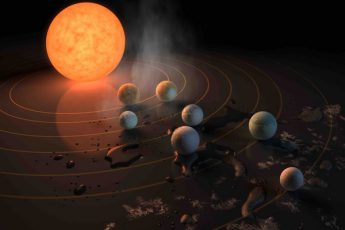Atmospheric evolution of planets – Photochemical model

How have the atmospheres of Mars and exoplanets (planets outside the solar system) changed in the past from the birth of the planets to the present? We have investigated about this point of view.
On Earth today, there is an atmosphere with 1 atm (1bar, 100 kPa), which is composed of N2: 78%, O2: 21%, Argon, Carbon dioxide, and so on. The current atmosphere on Mars, however, is mostly carbon dioxide and has about 1/100 less than that of the current atmosphere on Earth. The atmosphere varies from planet to planet.
So what was Mars’ atmosphere like in the past?
Since there are traces of liquid water on Mars in the past, it is beleived that Mars must have had a thicker atmosphere than we know today. However, the detailed composition of the atmosphere is still unknown.
We apply a photochemical model of the atmosphere (which can simulate the composition of the atmosphere) to investigate what kind of atmosphere existed on Mars in the past. The ultimate goal of this research is to find out whether an environment existed on Mars in the past that could support life. This is my motivation for my daily research, imagining an extraterrestrial life form that may or may not exist.
Here is an example of one result.

The figure above is a plot of the results from the photochemical model.
It shows the density profile of each chemical species for a slightly thicker atmosphere than the current one on Mars, assuming a surface temperature of 200 K. The vertical axis corresponds to the altitude and the horizontal axis to the number density. The vertical axis corresponds to the altitude and the horizontal axis to the number density. The dark orange line on the far right is carbon monoxide and the line to the left is carbon dioxide.
This result shows that as the amount of atmosphere increases, there is a possibility that the atmosphere may change from being primarily composed of CO2, as it is now, to being primarily composed of CO. It is believed that an atmosphere rich in reductive CO would be more suitable for the development of life than an atmosphere composed mainly of CO2. From this point of view, it would be interesting to verify this result by observation in the future.
(Master’s course 2nd, Shungo Koyama)





